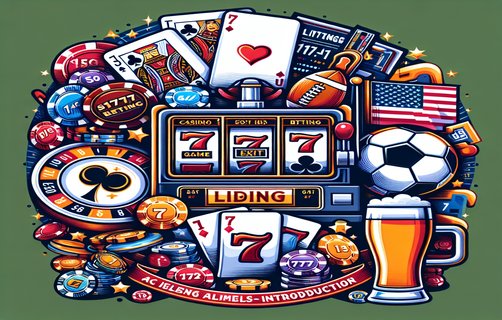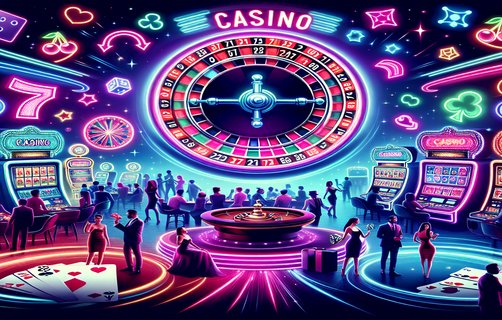Navigating the Labyrinth: The Intricacies of Game Design
खेल डिजाइन के जटिलताएँ: एक अन्वेषणीय अनुभव
In the realm of tabletop and digital gaming, the intricacies of design dictate the immersive experience players encounter. Elements like luck, challenges, character boards, and role cards contribute to a multilayered adventure that players eagerly explore. Each aspect can foster engagement or frustration, hinging on their execution and balance.
Luck plays a vital role in gameplay, often dictating the flow and enjoyment of a game. It provides unpredictability, causing moments of intense excitement or utter despair. However, relying too heavily on luck can alienate strategy-oriented players, prompting designers to tread carefully in its deployment.
Challenges serve as the backbone of any game, creating tension and investment. A well-balanced set of challenges ensures players remain engaged without feeling overwhelmed. The block paths created by obstacles and adversaries are essential; they not only guide player progression but also encourage critical thinking and strategy formulation. The challenge lies in designing these obstacles so that they enhance, rather than detract from, the game's enjoyment.
Central to player experience are character boards. These boards represent individual player attributes and decision-making capabilities, serving as crucial tools in strategizing game play. Their design must encourage player interaction and reflect personal growth through a progression system. This system, too, requires balance—players should feel a sense of growth without rendering earlier actions irrelevant. Progression should be meaningful, instilling a sense of accomplishment at every level.
Integrating an action schedule with limits adds another layer of complexity. It structures gameplay while imposing constraints that require thoughtful planning. Players may find themselves weighing risks against gains, enhancing the strategic depth of the game. Each action taken could lead to unexpected outcomes, intertwining luck and skill in a delightful dance.
Territorial sections within the game world can create an immersive environment, fostering a sense of ownership and strategy. Players must navigate these spaces with awareness, competing against rivals for control, which is both thrilling and daunting. The territorial dynamics not only enrich the narrative but also serve to elevate competition.
Lastly, role cards introduce variability in how players interact with the game world. Each card offers unique abilities that shape strategies and outcomes, encouraging diverse play styles. By incentivizing different approaches, role cards ensure that each game feels fresh, regardless of the number of repetitions.

In conclusion, the synthesis of these elements crafts a richly textured experience that is deeply satisfying when executed with careful consideration. Game design is not merely about assembling mechanics; it is about understanding player motivations, fostering engagement, and creating a nuanced landscape where both luck and skill intertwine harmoniously.
टेबलटॉप और डिजिटल गेमिंग के क्षेत्र में, डिजाइन की जटिलताएँ उस अनुभव को निर्धारित करती हैं जो खिलाड़ी सांस्कृतिक रूप से अनुभव करते हैं। जैसे भाग्य, चुनौतियाँ, चरित्र बोर्ड और भूमिका कार्ड ऐसे महत्वपूर्ण तत्व हैं जो एक बहुआयामी रोमांच को संजोते हैं जिसे खिलाड़ी ध्यानपूर्वक खोजते हैं। प्रत्येक पहलू सगाई या निराशा को बढ़ावा दे सकता है, जो उनके कार्यान्वयन और संतुलन पर निर्भर करता है।

भाग्य गेमप्ले में एक महत्वपूर्ण भूमिका निभाता है, अक्सर एक खेल के प्रवाह और आनंद को निर्धारित करता है। यह अप्रत्याशितता प्रदान करता है, जो तीव्र उत्तेजना या पूर्ण निराशा के क्षणों का कारण बनता है। हालाँकि, भाग्य पर बहुत अधिक निर्भरता रणनीति-उन्मुख खिलाड़ियों को बाहर कर सकती है, जिससे डिजाइनरों को इसके उपयोग में सावधानी से चलना पड़ता है।
चुनौतियाँ किसी भी खेल की नींव होती हैं, जो तनाव और निवेश का निर्माण करती हैं। सुचारू चुनौती सेट यह सुनिश्चित करती है कि खिलाड़ी व्यस्त रहें बिना अति से overwhelmed हुए। अवरोधों और प्रतिकूलताओं द्वारा बनाए गए ब्लॉक पथ आवश्यक हैं; वे न केवल खिलाड़ी की प्रगति को मार्गदर्शित करते हैं, बल्कि महत्वपूर्ण सोच और रणनीति बनाने को भी बढ़ावा देते हैं। चुनौती इस बात में है कि इन बाधाओं को इस तरह से डिजाइन करना जो खेल के आनंद को बढ़ाती हैं, न कि घटाती हैं।
खिलाड़ी अनुभव के साथ केंद्रीय चरित्र बोर्ड होते हैं। ये बोर्ड व्यक्तिगत खिलाड़ी गुणों और निर्णय लेने की क्षमताओं का प्रतिनिधित्व करते हैं, जो खेल खेलते समय रणनीतिकरण के लिए महत्वपूर्ण उपकरण के रूप में कार्य करते हैं। उनका डिज़ाइन खिलाड़ी परस्पर क्रिया को प्रोत्साहित करना चाहिए और प्रगति प्रणाली के माध्यम से व्यक्तिगत विकास को दर्शाना चाहिए। यह प्रणाली भी संतुलन की आवश्यकता रखती है- खिलाड़ियों को विकास का अनुभव करना चाहिए बिना पहले के कार्यों को अप्रासंगिक बनाना। प्रगति का अनुभव अर्थपूर्ण होना चाहिए, जिसमें हर स्तर पर उपलब्धि की भावना शामिल होती है।
एक्शन शेड्यूल के साथ सीमाओं का एकीकरण और जटिलता की एक और परत जोड़ता है। यह गेमप्ले को struktur करता है जबकि ऐसे प्रतिबंध लगाता है जिनके लिए विचारशील योजना की आवश्यकता होती है। खिलाड़ी जोखिमों को लाभों के खिलाफ तौलने में ध्यान केंद्रित कर सकते हैं, जो खेल के रणनीतिक गहराई को बढ़ाता है। प्रत्येक कार्रवाई ली जा सकती है जिससे अप्रत्याशित परिणाम निकल सकते हैं, भाग्य और कौशल को एक रमणीय नृत्य में intertwining करना।
खेल की दुनिया में क्षेत्रीय सेक्शन एक इमर्सिव वातावरण का निर्माण कर सकते हैं, जो स्वामित्व और रणनीति की भावना को बढ़ावा देते हैं। खिलाड़ियों को इन स्थानों को जागरूकता के साथ नेविगेट करना होगा, जो प्रतिकूलता के खिलाफ नियंत्रण के लिए प्रतिस्पर्धा करते हैं, जो रोमांचकारी और डरा देने वाला है। क्षेत्रीय गतिशीलताएँ narrative को समृद्ध करती हैं, लेकिन प्रतिस्पर्धा को भी बढ़ाती हैं।
अंत में, भूमिका कार्ड विविधता को प्रवेश करने की अनुमति देता है कि खिलाड़ियों के साथ खेल की दुनिया कैसे इंटरएक्ट करते हैं। प्रत्येक कार्ड विशेष क्षमताएँ पेश करता है, जो रणनीतियों और परिणामों को आकार देती हैं, विभिन्न खेल शैलियों को प्रोत्साहित करती हैं। विभिन्न दृष्टिकोणों को incentivize करके, भूमिका कार्ड यह सुनिश्चित करते हैं कि प्रत्येक खेल ताज़ा लगे, चाहे दोहराव की संख्या कितनी भी हो।
अंत में, इन तत्वों का संयोग एक समृद्ध टेक्सचर अनुभव को तैयार करता है जो सावधानीपूर्वक विचार के साथ कार्यान्वित किए जाने पर अत्यधिक संतोषजनक होता है। खेल डिजाइन केवल यांत्रिकी को इकट्ठा करने के बारे में नहीं है; यह खिलाड़ियों की प्रेरणाओं को समझने, संलग्नता को बढ़ावा देने, और बनावटित परिदृश्य बनाने के बारे में है जहां भाग्य और कौशल का सामंजस्यपूर्ण ढंग से intertwine होता है।

comments
GameMaster99
This analysis beautifully captures the essence of game design. I especially loved the section on role cards.
StrategistGal
I'm fascinated by how well you explained the balance of luck and strategy. It’s so true!
LuckBeAFriend
Great insights! The part about territorial sections really resonated with me.
CleverMoves
This is a must-read for aspiring game designers. Well articulated!
BoardGameEnthusiast
What a thorough breakdown of gameplay elements! I can't wait to implement some of these ideas.
FantasyPlayer
Absolutely loved the flow of this article. It inspired me to rethink my own game design strategies.